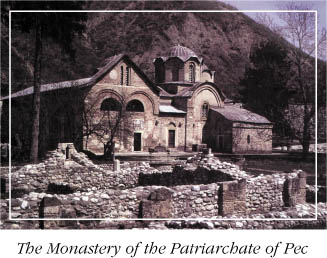|

The Serbs have been living in the territory of Kosovo and Metohija since
the 6th century. That territory is of exceptional importance for the Serbian history and
for the cultural-civilizational identity of Serbia - it was the centre of the Serbian
statehood and it is important for the Serbs just as the Wailing Wall is important for the
Jews. Many Serbian cultural monuments are situated in Kosovo and Metohija (200 medieval
churches). There are no historical data saying that the Albanians populated that territory
in the Medieval Ages. The Albanians in Kosovo and Metohija are mainly of Islamic religion,
with a small number of Roman Catholics. The question of Kosovo is not only a question of
territory or of the number of Serbian or Albanian population: it is an inalienable
national treasury, indispensable for the identity of the Serbian people.

Kosovo and Metohija was the least developed region until the Second World
War. Thanks to enormous investments of Serbia and Yugoslavia after the Second World War,
an important prosperity was achieved in industry, agriculture and in social activities.
The political and terrorist’s activities of the present separatists,
members of the Albanian national minority in Kosovo and Metohija, follows consistently the
project of the Prizren Ligue from 1878, which envisaged the unification of all, Albanians
(from Albania, Greece, Macedonia and FRY) and the creation of Great Albania. This
programme of unification is still a generally accepted national ideal and political
objective of the Albanian extremists.
Over past several decades, the Albanians from Yugoslavia, Greece, and,
recently, from Macedonia, present themselves to the world as the "part of the nation
in jeopardy" and try to prove the "injustice" for, according to the
Albanian interpretation, "one half of the Albanian ethnic territories" was left
outside the borders of Albania.

|